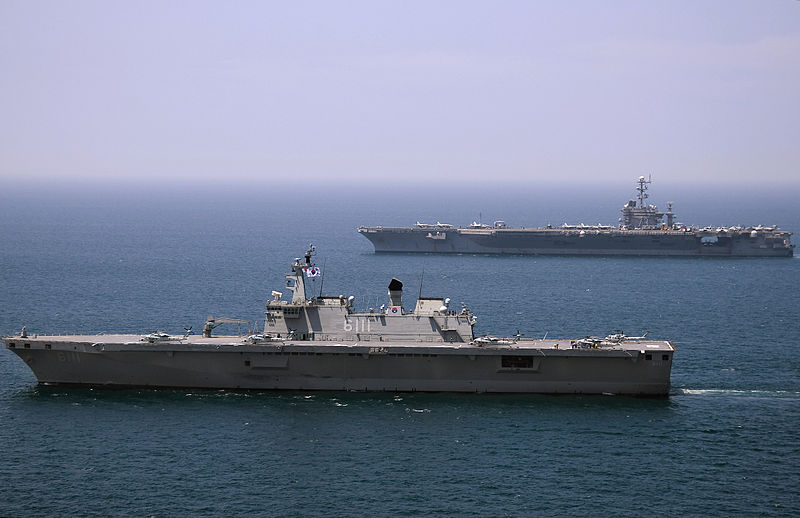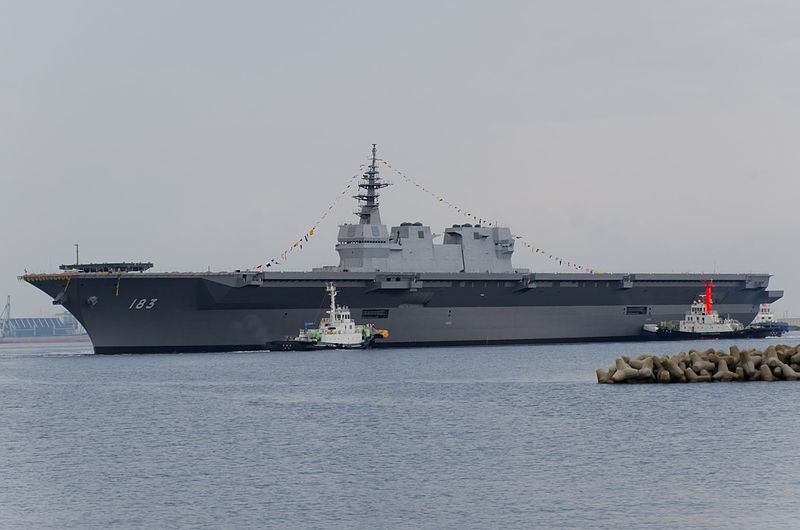The Great War
Published 11 Nov 2019Georgia, Armenia and Azerbaijan used the power vacuum after the 1917 revolution in Russia and after the collapse of the Central Powers in 1918 to gain their independence. But the Caucasus region was of vital strategic importance to the new Russian regime, to the British and to the Turks.
» SUPPORT THE CHANNEL
Patreon: https://www.patreon.com/thegreatwar
Merchandise: https://shop.spreadshirt.de/thegreatwar/» SOCIAL MEDIA
Instagram: https://instagram.com/the_great_war
Twitter: https://twitter.com/WW1_Series
Reddit: https://reddit.com/r/TheGreatWarChannel»CREDITS
Presented by: Jesse Alexander
Written by: Jesse Alexander
Director: Toni Steller & Florian Wittig
Director of Photography: Toni Steller
Sound: Toni Steller
Editing: Toni Steller
Mixing, Mastering & Sound Design: http://above-zero.com
Maps: Daniel Kogosov (https://www.patreon.com/Zalezsky)
Research by: Jesse Alexander
Fact checking: Florian WittigChannel Design: Alexander Clark
Original Logo: David van StepholdA Mediakraft Networks Original Channel
Contains licensed material by getty images
All rights reserved – Real Time History GmbH 2019
November 12, 2019
The Brief Independence of Georgia, Armenia and Azerbaijan I THE GREAT WAR 1919
Building Angkor – The “Lost” City – Extra History – #5
Extra Credits
Published 8 Nov 2019Join us on Patreon! http://bit.ly/EHPatreon
After its decline, Angkor had become the Ancient, Lost City so prominent in our pop culture. Just one problem: Angkor was neither ancient (having declined around the same time as Hundred Years War) nor lost (people still lived there!). That didn’t stop the European visitors from trying to invent all kinds of stories for how this city could possibly exist, and stealing parts of the temple to bring back home. But despite all the hardships Angkor faced, it managed to become a national symbol for Cambodia and still remains to this day.
Speculations on South Korean or Japanese F-35 deployment
Last week, Strategy Page considered the options available for both South Korea and Japan to convert some of their F-35 orders to F-35B variants which would allow operations from small helicopter carriers in service or in plan for both navies:

The Republic of Korea Navy amphibious landing ship ROKS Dokdo (LPH 6111) and the aircraft carrier USS George Washington (CVN 73) transit the Sea of Japan (July 27, 2010).
U.S. Navy photo by Mass Communication Specialist 3rd Class Charles Oki via Wikimedia Commons.
In October South Korea announced it was buying 20 more F-35 stealth fighters. There are already 40 on order and South Korea will have received 13 by the end of 2019. Those 60 F-35s will cost $9.7 billion and a decision still has to be made as to whether any of the second 20 will be the VTOL (Vertical Take-Off and Landing) F-35B version. The first 40 will all be the basic F-35A which just operates from land-based airfields. But South Korea has ships that F-35Bs could operate from.
By 2018 South Korea had two 14,500 ton Dokdo class large amphibious ships. These South Korea LPHs (Landing Platform Helicopter) are similar in appearance and operation to the larger American amphibious ships. The LPH flight deck can handle helicopters, as well as vertical takeoff jets like the F-35B. The Koreans deny that the ship will be used with these jets, but the capability is there. The LPH normally carries 720 combat troops and their heavy equipment. Dokdos also carry fifteen aircraft; two V-22 vertical takeoff transports and 13 helicopters. Marado, the second Dokdo, has a redesigned flight deck that can handle two V-22s at once instead of just one. In addition to a more powerful 3-D surveillance radar for tracking aircraft, Marado has to Phalanx anti-missile system.
South Korea is also planning to build one or more 30,000 ton ships that look like the Japanese DDH (destroyer helicopter carrier) and could handle a dozen F-35Bs. Neighboring Japan has already ordered some F-35Bs so that it can experiment with some of these aircraft aboard the existing Japanese DDHs. Since 2017 Japan has had two 27,000 ton “destroyers” (DDH type ships) that look exactly like an aircraft carrier. These Izumo class ships can carry up to 28 helicopters or up to ten vertical takeoff aircraft. The carriers are armed only with two 20mm Phalanx anti-missile cannon and launchers with sixteen ESSM missiles for anti-missile defense. The DDH have powerful engines capable of destroyer-like speeds of over fifty-four kilometers an hour. Izumo has considerable cargo capacity, which is intended for moving disaster relief supplies quickly to where they are needed. Apparently, some of these cargo spaces can be converted to carry additional weapons and equipment needed to support F-35B fighter-bombers. Izumo could carry and operate at least ten F-35Bs once modifications are made to the flight deck to deal with the extremely high temperatures the F-35B generates when taking off or landing vertically (like a helicopter). When the first DDH entered service in 2015 Japan made no mention of buying F-35Bs or modifying the LPH flight decks to handle the very high temperatures. The Izumos already have an elevator (to the hanger deck under the flight deck) powerful enough to carry an F-35B fighter.
Another factor that makes operating F-35Bs from an LPH or DDH possible is the availability of smart bombs and small air-to-ground guided missiles for warplanes. A LPH or DDH was not designed to haul a lot of munitions for aircraft but, the amount of smart bombs and missiles needed to make five or ten F-35Bs effective would not be large. These ships already carry a lot of fuel for helicopters and have space for maintenance gear to support many helicopters. South Korean and Japanese naval planners noted this when they suggested using LPHs and DDHs as platforms for F-35Bs.
Merlin – The Engine that Won the War
Curious Droid
Published 28 Sep 2019Sounds like a bit of a bold claim that one engine helped change the course of WW2 but when you see the evidence it has a lot of validity but how did one little engine change the course of world events and become the engine that won the war?
I would like to thank David Irwin of Historic Aero Engines not only for the generous use of his footage but as in checking over the script and finished video for technical accuracy.
Historic Aero Engines display team :
https://www.youtube.com/channel/UCtE_…Patreon https://www.patreon.com/curiousdroid
Paypal.me https://www.paypal.me/curiousdroidSponsored by
Craig Fleming, Florian Hesse, Peter BarberPresented by Paul Shillito
Written and Researched by Paul Shillito with assistance from David Irwin.
Images and Footage:
Historic Aero Engines, Rolls Royce, USAF, RAF, Boeing, Packard,
Joel TrickMusic From the Youtube library
“Magical Gravity” by Asher Fulero
“Saving the World” by Aaron Kenny
“Adrift” by ELPHNT
“Oceans, Rivers, Canyons” by ELPHNT
“The Story Unfolds” by Jingle Punks
QotD: The crimes of the Righteous
There was no mercy in them, not even those specks of humanity that can occasionally be glimpsed in the most heartless of souls. Priests, judge, scribe, and torturers acted with such rigorous coldness and distance that that was precisely what evoked the most horror. Even more blood-curdling that the suffering they were capable of inflicting was the icy determination of those know they are backed by divine and human laws and who at no moment doubt the righteousness of what they are doing.
Later, with time, I learned that although all men are capable of good and evil, the worst among them are those who, when they commit evil, do so by shielding themselves in the authority of others, in their subordination, or in the excuse of following orders. And even worse are those who believe they are justified by their God. Because in the secret dungeons of Toledo, nearly at the cost of my life, I learned that there is nothing more despicable or more dangerous than the malevolent individual who goes to sleep every night with a clear conscience. That is true evil. Especially when paired with ignorance, superstition, stupidity, or power, all of which often travel together.
And worst of all is the person who acts as exegete of The Word — whether it be from the Talmud, the Bible, the Koran, or any other book already written or yet to come. I am not fond of giving advice — no one can pound opinions into another’s head — but here is a piece that costs you nothing: Never trust a man who reads only one book.
Arturo Pérez-Reverte, Purity of Blood, 1997.







